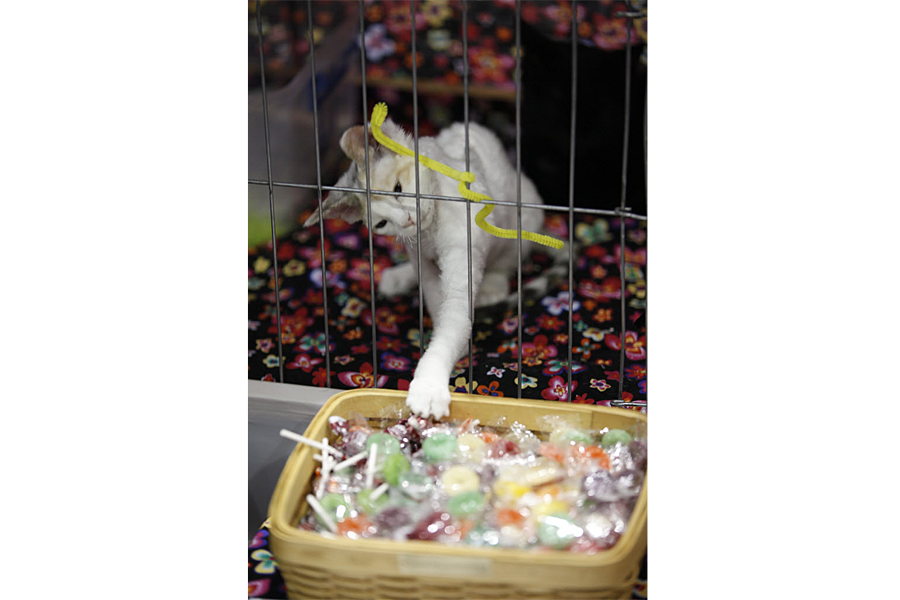Why does your cat need to know bitterness?
Loading...
After taking a bite of something bitter you might want to spit it out. And your cat might do the same.
But Fluffy might be expressing more than just being a picky eater.
Cats can taste bitterness too, says a new study.
In fact, domestic cats have at least seven kinds of functional bitter taste receptors, according to the paper published Wednesday in the journal PLOS ONE. (By comparison, humans have 25 or so.) Taste receptors, proteins that trigger a signal when a substance encounters the receptor, are necessary for animals to experience taste.
The presence of functional bitter taste receptors in cats surprised scientists, because cats, being obligate carnivores, eat only meat. Perception of bitterness has long been thought to be linked with the consumption of plants.
“We don’t really know what bitter taste actually does, functionally speaking,” study author Gary Beauchamp, emeritus director and president of the Monell Chemical Senses Center tells The Christian Science Monitor in an interview.
Previously, scientists thought the ability to taste bitterness was to protect animals from eating poisonous plants. Cats are unlikely to snack on plants, so the scientists expected no functional bitter taste receptors in the felines.
Dr. Beauchamp suggests a few explanations. Perhaps “the prey of cats does include things that are not plants but may have bitter taste to them, such as invertebrates, spiders and stuff like that,” he says. Or, maybe the taste receptors serve other protectional functions internally.
“It turns out these receptors are found throughout the body. They’re in the nose, they’re in the upper respiratory tract, they’re probably in the gut,” says Beauchamp. That bolsters the idea that taste receptors could be involved in a more complex defensive or warning system.
When humans put a forkful in their mouth, they experience taste in a multi-sensory way. “When the general public uses the word ‘taste’ it’s referring to the sensory experience of essentially anything you put in your mouth, chew up and swallow. But that is really made up of three different senses,” Beauchamp explains.
First, there’s the sense of taste, which is the subject of this study. But the sense of smell is also involved, as the scent of a meal wafts into one's nose. The third is a sort of irritant experience, like the burn of hot peppers.
“Those things are all perceived as a single thing,” says Beauchamp. But anatomically, taste is just the signal of important nutrients or poisonous compounds present in a substance.
There’s still a lot more to be learned about the function of taste receptors and their prevalence in different animals.
“Different species see the world and taste the world in different ways depending upon their ecology and their evolution,” Beauchamp says.
Cats’ completely carnivorous diet is distinct from our own, so, he says, “we’re trying to understand how their experience, their oral experience, is matched to their diet.”
Cats may be like humans in that they find bitterness unpleasant, but previous research revealed that cats dislike sweetness — something humans tend to crave.
“On the one hand we find they don’t like sweet things, which is unbelievable to a child — all kids love sweets,” Beauchamp says, “But on the other hand, they are like the child in the sense that bitter things are very unpalatable and seem to be perhaps a signal of danger of some sort.”
Flavor isn’t just about poison or danger. Taste appears to helps animals, including humans, get enough of nutrients. Sensing sweetness, for example, is a way that the body identifies sugars.
“In some sense, the taste system is the last gateway on the biggest decision intrinsically that any animal makes, including you and me, any time in their lives,” Beauchamp says. “That is, am I going to take this thing and put it into my body or am I going to reject it?”







